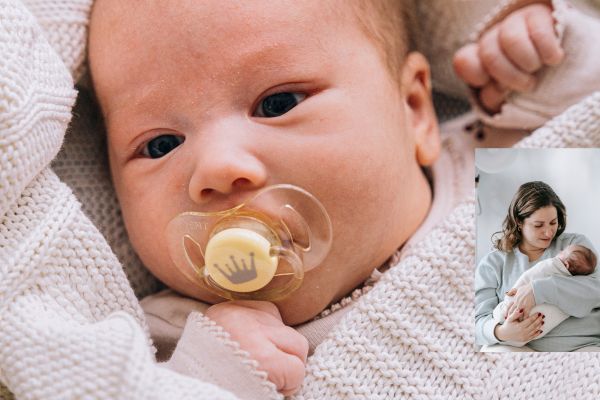
How to Fold and Take Care of Newborn Clothes
Welcoming a newborn brings immense joy. It also brings many duties. These include the careful care of their tiny clothes. From cute onesies to cozy blankets. Each garment is key to keeping your little one comfortable and safe. But, it takes more than routine washing to keep these fabrics clean, soft, and well-preserved. We will explore the art of folding and caring for baby clothing in this guide, providing tips and tricks to help you confidently handle this crucial part of parenthood. You will learn how to keep your baby’s clothes in perfect shape and condition while making your daily routines run more smoothly, from folding clothes efficiently to washing and storing them properly. Come along with me as we begin to build a loving environment where each fold acknowledges your commitment to your priceless bundle of joy.
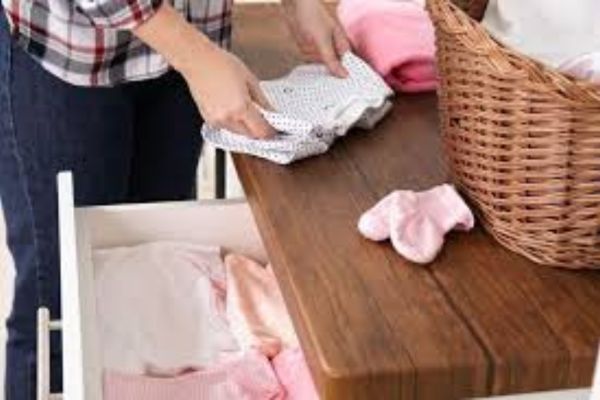
Importance of Proper Care for Newborn Clothes
Newborn clothes are more than simply clothing; they give comfort and protection for your baby in its early days. Proper care is required to keep these delicate textiles soft, clean, and safe for your baby’s sensitive skin. Maintaining cleanliness and freshness can help your newborn avoid skin irritations, allergies, and discomfort. Here’s why it’s so crucial to take care of newborn clothes.
Comfort: Babies spend a large amount of time in their clothes, therefore they must be as comfortable as possible. Properly cared-for garments retain their softness and breathability, keeping your baby comfortable and satisfied throughout the day and night.
Sensitive Skin: Newborns are prone to rashes and irritation due to their delicate, sensitive skin. All materials that come into contact with their skin should be clean, gentle, and allergy- and irritant-free. Maintaining the integrity of the materials and lowering the chance of skin reactions are two benefits of proper care, which includes washing with mild detergents and avoiding harsh chemicals.
Hygiene: Diaper leaks, spills and spit-ups are all common among babies, and they can quickly ruin clothing. Your baby’s clothing will stay clean and fresher longer with regular washing and good maintenance, which helps to get rid of bacteria, germs, and odors. This is especially crucial for avoiding any respiratory problems or skin infections in newborns, whose immune systems are still growing.
Longevity: Baby clothing are frequently inherited by younger siblings or other family members and have sentimental importance. You can extend the life of these clothes and make sure they stay in good shape for usage in the future by taking care of them right away. This lowers waste and encourages sustainability in addition to saving money.
Bonding: bonding with your baby can be enhanced by taking good care of their clothing, such as folding small onesies and sorting tiny socks.
Cost-Effectiveness: Over time, spending time caring for infant clothing might result in financial savings. You can lessen the likelihood that you will need to replace them frequently owing to wear or damage by keeping them clean, well-maintained, and stored.
Emotional Well-Being: Having neatly arranged baby clothes can provide carers a sense of satisfaction and control at a period of major adjustment. It can also help create a peaceful and caring atmosphere for the family and the infant.
The Benefits of Organizing Clothes for Newborn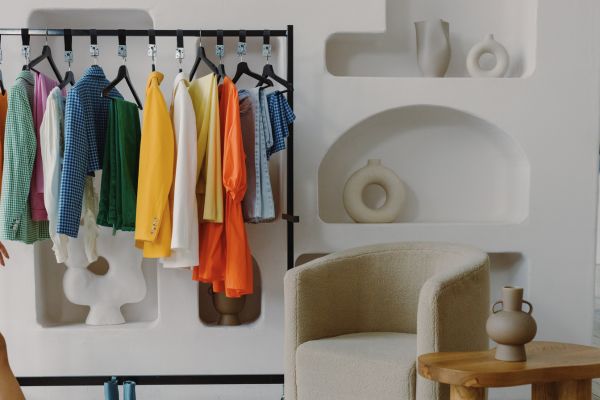
Beyond just appearance, there are many practical uses for having infant items that are meticulously folded and placed. As parents and carer its makes the job of parenting effortless easy. Now lets look at some benefit of organizing newborn clothes.
Efficiency in Daily Routines: Parents can quickly locate what they need without having to dig through mountains of clothing when infant garments are folded and arranged properly. This saves time while getting dressed for the baby’s several activities throughout the day or on hectic mornings.
Reduced Levels of Stress and Overwhelm: Being a parent can be very stressful, especially for first-time parents. Having a system in place to arrange baby clothes gives you a sense of control and order in the middle of the turmoil that comes with taking care of a newborn, which lowers stress levels.
Optimized space utilization: refers to the efficient use of physical space. By maximizing the use of available space, babies bring a lot of stuff with them, so keeping their clothes in order will help make the most of the storage space in the living room or nursery. A baby’s clothes may fit in even small rooms without feeling cluttered with the right folding and storing strategies.
Extended Clothes Lifespan: Parents can contribute to the prolongation of the lifespan of each article of clothing by folding and storing baby clothes correctly. Clothes that are folded neatly are less prone to crease or get damaged, which lowers the need for regular replacements as a result of wear and tear.
Ease of Selection: Parents find it simpler to choose clothes for their infant when their wardrobe is well-organized. Whether it’s a onesie for bedtime or a lovely outfit for a family outing, parents can easily find what they need when clothes are folded neatly and arranged by kind or size.
Promotes Independence: As infants get older, they could begin to show an interest in getting dressed. Disorganized wardrobes promote independence and decision-making abilities in kids from an early age and enable parents to teach their kids how to choose their own clothes.
Encourages Personal Hygiene: Clean and well-organized clothes help create a hygienic and tidy environment for the infant. Frequent washing, folding, and storing minimize the buildup of dust, debris, and allergens on clothing, lowering the baby’s risk of allergies or skin irritation.
Enhanced Visual Appeal: A well-organized closet not only makes it easier to find clothing but also enhances the aesthetic appeal of the nursery or baby’s room.
Folding Newborn Clothes
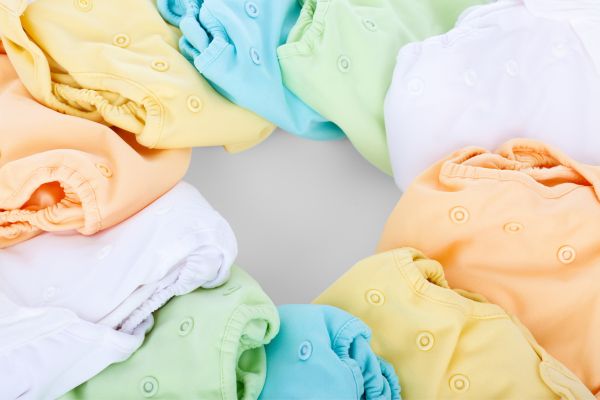
In addition to keeping your child’s closet or wardrobe organized, folding newborn clothes correctly guarantees that, even in the midst of the bustle of parenthood, you can find the perfect outfit for your child straight away. Here’s how to fold baby clothes properly, step-by-step
1.Onesies
a. Place the front side of the onesie facedown, flat on a spotless surface.
b. Tighten up any creases or folds.
c. Ensure the onesie lies flat by folding one sleeve across its torso.
d. Fold the second sleeve similarly, overlapping it by a small amount with the first.
e. To make a tidy rectangle, fold the bottom of the onesie up towards the top.
c. Verify that buttons or snaps are neatly positioned.
2.Sleepers
a. Place the sleeper flat with its front facing down on a spotless surface.
b. Tighten up any creases or folds.
c. Ensure the sleeper’s body lies flat by folding one sleeve across it.
d. Fold the second sleeve similarly, overlapping it by a small amount with the first.
e. To form a tidy rectangle, fold the sleeper’s bottom up towards the top.
c. Verify that all buttons and zippers are neatly aligned.
4. Pants and Leggings
a. Place the leggings or pants flat on a sanitized surface.
b. Tighten up any creases or folds.
c. Make sure your legs are precisely aligned by folding one over the other.
d. Bring the waistband down to meet the leggings or pants’ bottom.
e. To make a small rectangle, fold in half once more if needed.
5. Socks and Booties
a. Place the items flat on a sanitized surface.
b. Match the toe to the heel by folding a single sock or bootie in half.
c. To make a tidy rectangle, fold the top of the sock or bootie down towards the bottom.
d. Continue with the remaining sock or bootie.
Tips for Maintaining the Shape and Quality of Newborn Clothes While Folding
When folding baby garments, it’s important to preserve their quality and shape so your child can use them for a long time. Here are a few useful suggestions.
Fold Gently: Treat baby garments gently; try not to pull or stretch them unnecessarily. Gently fold them to avoid creases and wrinkles that can eventually become permanent.
Employ Spotless Hands: Before handling baby clothing, wash and dry your hands to prevent transmitting oils, dirt, or other materials onto the fabric.
Prevent Overstuffing: Try not to jam too many clothes into a closet or other storage space. Clothes that have been overstuffed may wrinkle, stretch, and become misshapen.
Pick the Right Storage: Keep folded clothing out of direct sunshine, dampness, and extremely hot or cold conditions. Instead, store it in a fresh, dry location. To promote air circulation, choose ventilated drawers or storage containers.
Don’t Fold Wet garments: Before folding, make sure your garments are entirely dry. Clothes that are too moist or wet to fold can develop musty odors and mold and mildew.
Store Seasonally Appropriately: Make sure to appropriately store off-season things if your infant has clothing for multiple seasons. While storing clothing, vacuum-sealed bags or garment bags can help shield items from dust and vermin.
Examine the labels on the fabric: Adopt any special cleaning guidelines that come with the fabric labels on items of clothing for a newborn. Different folding or storing techniques may be needed for different textiles.
Examine Frequently: Check stored clothing periodically for mildew, vermin or damage. Address any problems as soon as possible to stop things from getting worse.
Pick the Right Storage: Keep folded clothing out of direct sunshine, dampness, and extremely hot or cold conditions. Instead, store it in a fresh, dry location. To promote air circulation, choose ventilated drawers or storage containers.
Use Acid-Free Tissue Paper: To avoid color transfer and safeguard sensitive textiles, when keeping clothing for a long time, think about separating the garments using acid-free tissue paper.
Rotate items: To avoid creases and deformed clothing, rotate the items in your baby’s wardrobe on a frequent basis to avoid them being pressed into one position for an extended period of time.
Importance of Using Gentle Techniques for Delicate Fabrics:
- Newborn clothes often feature delicate fabrics like cotton, knit, or muslin that require gentle care to maintain their softness and integrity.
- Rough handling or improper folding techniques can cause damage to these fabrics, such as stretching, pilling, or tearing.
- By using gentle techniques, you can ensure that newborn clothes remain in excellent condition, providing comfort and durability for your little one.
Caring for Newborn Clothes
Guidelines for Washing Newborn Clothes
Selecting a Gentle Detergent: Go for a detergent that is moderate and fragrance-free, especially designed for newborns or skin that is sensitive. Keep an eye out for labels that say dermatologist-tested or hypoallergenic.
Steer clear of detergents that include strong chemicals, colors, or perfumes since they might irritate a baby’s sensitive skin.
Sorting Clothes: To avoid color leaking during washing, arrange baby clothing according to color. Separately wash light-colored and dark-colored goods.
Sort clothing according to kind of fabric (cotton, polyester, mixes, etc.) to make sure it is handled properly. Gentler washing cycles could be necessary for delicate textiles.
Washing Clothes in Cold Water: When washing infant clothing, use cold water to help maintain colors and reduce shrinkage.
To ensure mild agitation and avoid damaging delicate materials, set your washing machine to a gentle or delicate cycle.
Hot water should not be used on clothing for newborns since it can shrink textiles and fade colors.
Averting Bleach and Harsh Chemicals: When washing clothing for a newborn, avoid using bleach or other harsh chemical additives. These materials may irritate skin and be too harsh for sensitive fabrics. Instead, trust your favorite baby detergent’s mild cleaning abilities to get rid of stains and grime without sacrificing the integrity of the fabric.
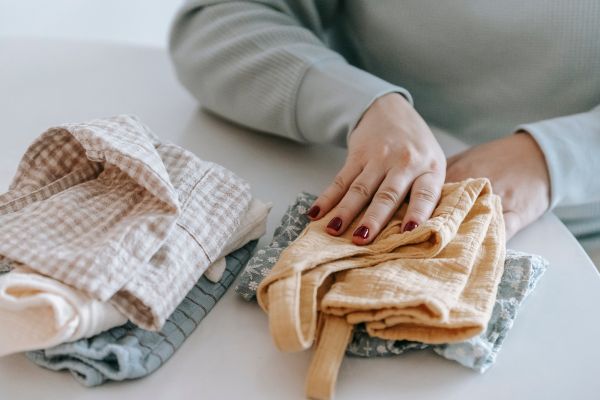
Tips for Drying Newborn Clothes
Air-Drying:
-
- Whenever possible, opt for air-drying newborn clothes to preserve their softness and prevent shrinking.
- Hang clothes on a drying rack or clothesline indoors or outdoors, ensuring they are away from direct sunlight to prevent color fading.
- Air-drying is particularly beneficial for delicate fabrics like cotton or muslin, as it minimizes the risk of damage from high heat.
Avoid Using a Dryer:
-
- Avoid using a dryer for newborn clothes, especially those made of delicate fabrics.
- High heat from the dryer can damage fibers, cause shrinkage, and affect the softness of the fabric.
- If you must use a dryer, select a low-heat or delicate cycle to minimize the risk of damage.
Prompt Removal:
-
-
- Remove clothes from the dryer promptly once they are dry to prevent overheating and minimize wrinkles.
- Hanging clothes immediately after drying can help maintain their shape and reduce the need for ironing.
-
Elimination of Stains
The following are safe and efficient ways to get rid of typical stains on infant clothing:
Stains from breast milk or formula
Stains from infant food or vomit
Blooper-out stains in diapers
Measures to prevent the use of harsh chemicals that could damage a baby’s skin
Rotation and Storage
Outgrown Clothes Storage: Clean and Sort: Make sure all outgrown clothing is clean and stain-free before storage. To facilitate easy retrieval later, sort them by type and size.
Use Appropriate Containers: To keep clothing safe from moisture, dust, and pests, store it in vacuum-sealed bags or clean, airtight containers. Use transparent containers if you want to make identification simple.
Container Labels: To enable easy access when needed, clearly mark each container with the sizes and kinds of clothes kept inside.
Store in a Cool, Dry Place: To avoid mildew, and musty smells, store outgrown clothing in a cool, dry place.
Clothing Rotation for Newborns: Verify Size and Season Make sure your kid is dressed appropriately for the season and in the right size by regularly evaluating their wardrobe.
Rotate in Accordance with Growth: As your child gets bigger, swap out the smaller sizes for larger ones that are kept in storage. This guarantees that your infant will always fit into comfortable garments.
Think About Your Seasonal Needs: Adjust your wardrobe to the changing seasons. When necessary, replace out-of-season apparel with appropriately sized pieces by storing the former.
Examine for Wear and Tear: When switching out clothing, make sure to look for any indications of deterioration or wear. Items that are no longer in good shape should be repaired or thrown away.
Donate Used Clothes: You may choose to give gently used, outgrown clothing to charitable organizations or give it to a friend or relative.
Conclusion
Not only is it practical to fold and care for baby clothing properly, but it’s also a labor of love for your child. Keep your baby’s clothing tidy, accessible and well-organized by folding onesies, sleepers, pants, socks and booties according to the instructions provided. Furthermore, following instructions for air-drying wherever feasible, separating garments by color and fabric type, and washing with mild detergents will protect your baby’s sensitive skin from harsh chemicals and preserve the softness of their clothing.
Note that treating infant clothing necessitates the use of gentle procedures because these items are sometimes composed of fragile fabrics that need extra attention. By adopting these routines, you not only preserve the fit and condition of your infant’s clothing but also foster a caring atmosphere where their comfort and welfare are given first priority.
Enjoy every second of folding those little clothes as you start your journey as a parent, knowing that your meticulous attention to detail will provide your child the comfort and care they deserve. You can make sure that your baby’s wardrobe is always prepared for whatever adventures lie ahead by following these easy yet crucial steps.